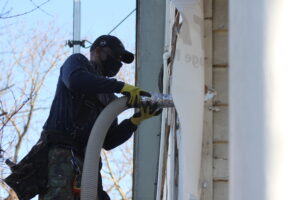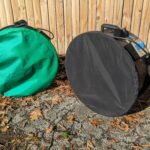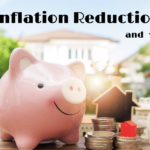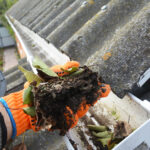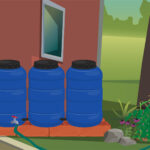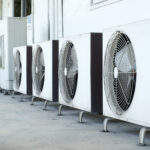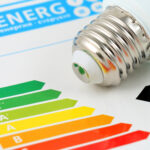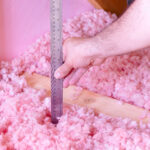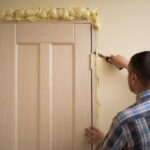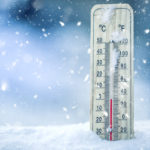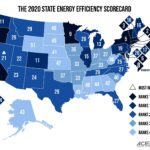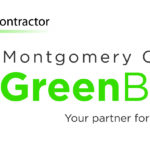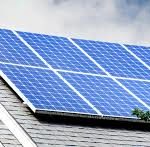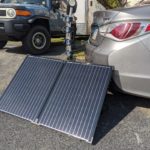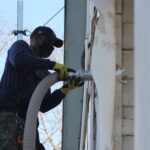Tips for Adjusting Your Home to Higher Energy Bills
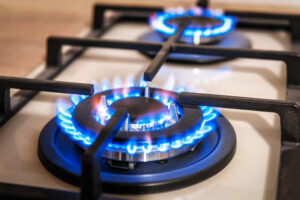
Temperatures are dropping and energy prices are rising. Specifically, the price for fuel to run your furnace, power the oven, heat your water, and fill your car’s gas tank. This is true for not only natural gas and electricity, but oil and propane too at an even greater spike. The US Energy Information Administration released their winter outlook expecting US households to spend a considerable amount more to heat their home compared with last year. Fortunately, the DMV region is expecting an above average winter. Nevertheless, this will hit everyone’s wallets.
Some of the contributing factors for this spike are domestic supply-chain malfunctions, extreme weather events this past year like Hurricane Ida, and international energy crunches in Asia and Europe. Naturally, energy demands rise during the winter months as it gets colder. The timing of these factors and seasonality have resulted in increased prices. Homes in the Northeast can expect to pay about 15% more for natural gas this winter compared to last winter as shown in the table below:
| Natural Gas | Electricity | Propane | Heating Oil |
Expenditure 21-22’ | $865 | $1,538 | $2,012 | $1,734 |
Expenditure 20-21’ | $731 | $1,404 | $1,368 | $1,210 |
Expenditure 19-20’ | $716 | $1,374 | $1,346 | $1,353 |
Price per unit 21-22’ | $13.46/mcf | $0.184/kWh | $3.57/gallon | $3.39/gallon |
Price per unit 20-21’ | $11.77/mcf | $0.172/kWh | $2.51/gallon | $2.55/gallon |
Price per unit 19-20’ | $11.72/mcf | $0.171/kWh | $2.50/gallon | $2.89/gallon |
Fortunately, there are immediate and long-term solutions to mitigating volatile energy bills for this winter and on.
Immediate—
- Weatherstrip Doors— All doors leading to the exterior of the home should be weather-stripped to prevent conditioned air from leaving the home. The Department of Energy says that leaks associated with cracks between doors, walls, and additions can account for 18-20% of heat loss in some homes. Materials for this project can be found at your local hardware store, and you’ll only need a few tools to get the job done.
- Air Sealing Around the House— Using caulk to seal cracks and openings in the house is another immediate solution. The material is cheap and can be applied between stationary parts of the home unlike weatherstripping, which is reserved for moving parts of the home like doors. Stationary parts of the home include recessed lights, exterior wall penetrations, windowsills, and along the fireplace wall. If you are planning to apply caulk throughout the home, it may be best practice to get an audit done beforehand so you do not seal up the house too tightly!
- Close the Fireplace Damper— This one may seem obvious. But it is easy to forget sometimes that the fireplace damper is open, especially if it is sporadically used. Leaving the damper open is the equivalent of leaving a window wide open, and that is money flying out of the house. Not only that, but it is an invitation for moisture, debris, and small animals to find their way in.
- Turn Down the Water Heater— Your water heater uses nearly 20% of your energy bill. If your water heater is set to the max temperature, 140°F, which is the default for some installation companies, consider turning it down 20ºF for a nice 6-10% reduction in your energy bill. Not only will you see the savings pile up, but you won’t be risking your health by getting scalded with extremely hot water.
- Buy Electric Space Heaters— The last immediate solution recommended is to buy electric space heaters to compensate where central heating may not be performing well. By getting a heater that is appropriately sized for the room, you can avoid turning the furnace way up and wasting money to compensate for one or two cold rooms.
Long Term—
- Programmable Thermostat— A programmable thermostat, or smart thermostat, is able to be scheduled in advance to a desired temperature throughout the day that brings comfort and is not wasteful. Some of the popular models include the Ecobee, Nest, and Honeywell. The smart thermostat learns your schedule and can shut off when not needed, like when you are not home or asleep. Plus, it logs energy usage so that you can track and plan future usage. Costs for a smart thermostat can run between $100-300, and usually pay off within the first year.
- Energy Audit— The most comprehensive solution is to get an energy audit done by a professional. Components of the audit include a blower door test which exaggerates where air enters and exits the home, giving a full outlook as to where air sealing is necessary. In addition, an energy audit analyzes current appliances to find cost saving opportunities through equipment replacement or tune ups. A third important component of the energy audit is an inspection of the attic to measure current insulation, which allows us to scope out a plan to bring insulation levels up to code. This is the action that takes the most amount of time, planning, and money. However, this does prove to be the most cost-effective solution as it thinks of the house as one system with inter-working pieces, meaning we consider how one home energy efficiency upgrade will affect the others.
Nobody can say for sure when energy prices will stabilize or go back to normal. With the situation presented in front of us, there are short-term solutions to mitigate some of the costs as well as long term solutions to prevent situations like this in the future.


